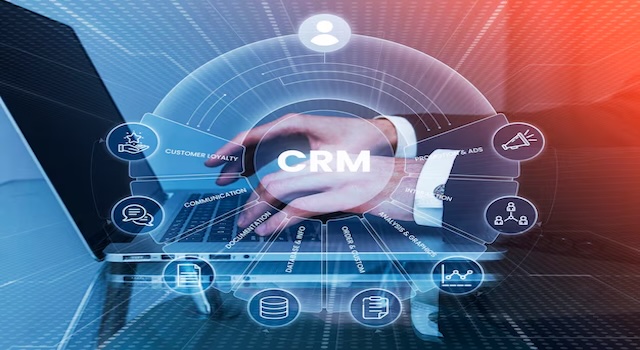Green CRM: Leveraging CRM to Support Sustainability Goals & Eco-Friendly Customer Initiatives
Introduction: Sustainability has shifted from a “nice-to-have” corporate initiative to a core business strategy. Customers, investors, and regulators increasingly expect organizations to demonstrate real commitment to reducing their environmental impact. At the same time, Customer Relationship Management (CRM) systems remain the central hub for managing customer interactions, preferences, and loyalty programs. Combining the two—embedding sustainability into CRM—creates a new category often referred to as “Green CRM.” This approach aligns customer engagement strategies with environmental responsibility, helping companies achieve eco-friendly goals while strengthening brand trust. In this article, we’ll explore how CRM can support sustainability initiatives, specific use cases, industry examples, challenges, and the future outlook of Green CRM.
Why Sustainability Belongs in CRM
CRM platforms have traditionally focused on sales, marketing, and service. But today’s customers care not only about price and product, but also about values. A 2023 global survey found that over 70% of consumers prefer to buy from companies with strong sustainability practices. By embedding eco-friendly initiatives into CRM, organizations can demonstrate transparency, reward sustainable behavior, and integrate green metrics into everyday customer engagement. CRM becomes more than just a database—it becomes a tool for driving environmental change at scale.
Core Principles of Green CRM
Green CRM is built on three foundational principles:
- Transparency: Using CRM to communicate environmental goals, progress, and impact to customers in clear, measurable ways.
- Engagement: Encouraging customers to participate in sustainability programs, with CRM tracking interactions and outcomes.
- Measurement: Linking eco-friendly actions (digital invoicing, carbon offsets, recycled packaging) to customer records and loyalty systems.
These principles ensure that sustainability is not treated as an isolated campaign, but as a long-term, measurable component of customer relationships.
Use Cases of Green CRM
There are multiple ways to apply sustainability strategies directly within CRM workflows. Key use cases include:
- Paperless Transactions: CRM systems can default to digital invoices, e-signatures, and online communications. This reduces paper use while tracking customer participation rates in CRM analytics.
- Loyalty Programs for Green Choices: Customers who opt for eco-friendly products, recycling programs, or low-carbon shipping can earn loyalty points tracked within CRM.
- Carbon Footprint Tracking: CRM platforms can calculate the estimated carbon impact of certain purchases or deliveries, showing customers the benefit of choosing greener alternatives.
- Green Marketing Campaigns: Personalized marketing messages can highlight sustainable product lines or eco-conscious initiatives, segmented by customer interest.
- Event Sustainability: For organizations that host conferences or events, CRM can manage digital tickets, virtual participation, and track carbon offset contributions.
- Eco-Certification Management: Businesses can log and showcase certifications (LEED, Fair Trade, CarbonNeutral) within CRM records, making them visible in B2B sales processes.
Industry Examples of Green CRM in Action
Several industries are experimenting with Green CRM strategies:
- Retail: Brands encourage customers to recycle old products or choose carbon-neutral shipping options. CRM tracks participation and offers targeted rewards.
- Manufacturing: Companies use CRM to provide transparency on supply chain sustainability, helping B2B buyers make informed, eco-conscious purchasing decisions.
- Financial Services: Banks and credit unions use CRM to promote green investment portfolios and track which customers opt into sustainable financial products.
- Hospitality: Hotels integrate CRM with sustainability programs, rewarding guests for skipping daily towel service or opting for digital receipts.
- Technology: SaaS companies reduce server energy consumption and highlight sustainable operations, communicating impact data through CRM-driven reports.
Benefits of Implementing Green CRM
Organizations adopting sustainability-focused CRM practices see a range of benefits:
- Enhanced Brand Loyalty: Customers feel more connected to brands that share their environmental values.
- Competitive Differentiation: Green CRM initiatives stand out in crowded markets where sustainability is a growing concern.
- Regulatory Readiness: Companies that already track environmental data through CRM are better positioned to comply with future reporting requirements.
- Cost Reduction: Paperless workflows, energy-efficient processes, and optimized logistics often reduce operating expenses.
- Employee Engagement: Staff feel more motivated when they see their company’s sustainability commitments integrated into everyday business processes.
Challenges of Green CRM
While the potential is strong, organizations face challenges when implementing Green CRM strategies:
- Data Complexity: Tracking sustainability metrics alongside customer data requires new integrations and data models.
- Greenwashing Risks: If companies exaggerate sustainability claims in CRM communications, they risk damaging trust.
- Adoption Resistance: Customers and employees may initially resist digital-first or eco-friendly changes if they perceive them as inconvenient.
- Measurement Accuracy: Estimating carbon footprints or eco-impact at the transaction level can be difficult without strong data partnerships.
- Integration Costs: Building sustainability tracking into legacy CRM systems often requires investment in customization and APIs.
Privacy and Compliance Considerations
Because Green CRM often involves tracking new kinds of data, privacy and compliance must be considered. For instance:
- Clear consent should be obtained before tracking customers’ eco-preferences or carbon offset participation.
- Data must comply with GDPR, CCPA, and other regional data protection regulations.
- Companies should avoid intrusive profiling; instead, focus on voluntary participation in green programs.
Handled correctly, this data strengthens trust. Handled poorly, it risks alienating customers.
Metrics for Measuring Green CRM Success
Organizations need clear KPIs to measure impact. Common metrics include:
- Participation Rates: Percentage of customers opting for paperless, eco-friendly, or carbon-neutral choices.
- Loyalty Lift: Change in customer retention rates among participants in sustainability programs vs. non-participants.
- Carbon Reduction: Total emissions saved by green customer behaviors tracked in CRM.
- Cost Savings: Operational savings from reduced paper use, shipping optimizations, or digital-first approaches.
- Engagement Metrics: Open rates, click-throughs, and responses to sustainability campaigns compared to generic campaigns.
Case Example: Green CRM in Retail
A global apparel retailer wanted to reduce its environmental footprint while strengthening customer loyalty. By integrating sustainability into its CRM, the company launched a program where customers received points for recycling old garments in-store or choosing carbon-neutral shipping at checkout. The CRM tracked participation and automatically rewarded loyalty points. Within the first year, over 20% of customers opted for greener shipping methods, garment recycling volumes doubled, and customer satisfaction scores increased by 15%. The CRM not only supported the company’s eco-initiatives but also boosted measurable business results.
Future Outlook: Where Green CRM Is Headed
The future of Green CRM lies in deeper integration between sustainability metrics and customer engagement strategies. Possible developments include:
- AI-Driven Carbon Calculations: Machine learning models will automatically estimate emissions at the transaction level and present customers with eco-friendly alternatives.
- Sustainability Dashboards: CRM platforms will offer built-in dashboards to track progress toward environmental goals at both organizational and customer levels.
- Blockchain Transparency: Distributed ledgers may validate eco-claims, ensuring customers that certifications and offsets are legitimate.
- Integration with IoT: Smart devices and sensors will feed real-time sustainability data into CRM, enabling even more accurate reporting.
- Regulatory Alignment: Governments may require standardized sustainability reporting, and CRM will become a tool for compliance as well as engagement.
Implementation Roadmap
Organizations interested in adopting Green CRM can follow a phased roadmap:
- Audit: Assess current customer workflows (billing, shipping, marketing) for sustainability improvement opportunities.
- Pilot: Launch a small-scale initiative such as paperless invoicing or a recycling reward program, tracked in CRM.
- Integration: Connect CRM with sustainability data sources (carbon calculators, supply chain platforms).
- Scaling: Roll out successful green programs across customer segments, tying them to loyalty and marketing campaigns.
- Optimization: Use CRM analytics to refine green initiatives, improve participation, and measure environmental impact more accurately.
Conclusion
Green CRM represents a powerful opportunity for organizations to align customer engagement with sustainability goals. By embedding eco-friendly choices, transparent communications, and measurable environmental impact into CRM systems, businesses can enhance loyalty, differentiate their brands, and contribute meaningfully to global sustainability efforts. While challenges around integration, data accuracy, and customer adoption exist, the rewards in trust, compliance, and long-term competitiveness make Green CRM a strategic priority for forward-thinking organizations.







